Cipher (CPR) Airdrop Checker
Verification Results
Cipher [Old] Tokens
These are the original Ethereum-based CPR tokens distributed during the 2021 airdrop.
- Contract Address: 0x[old-address-redacted]
- Network: Ethereum Mainnet
- Gas Fees: ~$15-$30 per transaction
Cipher (Polygon) Tokens
The upgraded version of CPR on the Polygon network with lower fees and faster transactions.
- Contract Address: 0xaa404804ba583c025fa64c9a276a6127ceb355c6
- Network: Polygon PoS
- Gas Fees: ~$0.001-$0.005 per transaction
Token Comparison Table
| Feature | Cipher [Old] (Ethereum) | Cipher (Polygon) |
|---|---|---|
| Contract Address | 0x[old-address-redacted] | 0xaa404804ba583c025fa64c9a276a6127ceb355c6 |
| Network | Ethereum Mainnet | Polygon PoS |
| Gas Fees | ~$15-$30 per transaction | ~$0.001-$0.005 per transaction |
| Transaction Speed | ~15-30 sec | ~2-6 sec |
| Current Status | Tagged "Cipher [Old]" | Listed as "Cipher" (active) |
| Typical Use Case | Legacy holdings, bridge swaps | Staking, platform fees, governance |
When Cipher launched its Cipher airdrop 2021, the crypto community buzzed with questions: Who got the free tokens? How much was given away? And what does the "[Old]" label mean today? This guide pulls together every verifiable fact about the 2021 airdrop, the token’s technical background, and what you should do now if you think you were a participant.
TL;DR - Quick Takeaways
- Cipher (CPR) airdropped tokens via CoinMarketCap in early 2021 as part of its “old” Ethereum‑based project.
- The airdrop used the original Ethereum contract; the later Polygon migration introduced a new contract (0xaa404804ba583c025fa64c9a276a6127ceb355c6).
- Total supply is 1.08billion CPR; circulating supply sits around 186million.
- Eligibility required a CMC account and interaction with Cipher’s services before the snapshot date (exact date not publicly disclosed).
- Tokens received on the old contract are now marked “Cipher[Old]” on trackers; they can be swapped to the Polygon version via the official bridge.
What Is Cipher (CPR)?
Cipher (CPR) is a utility token designed to represent partial ownership of the Cipher company and to power its business‑applications ecosystem. The project debuted on April92018, initially as an ERC‑20 token on the Ethereum blockchain. Its founders-teams spread across India, the United Kingdom, and NewZealand-promised transparency, accountability, and low‑cost transaction capabilities for businesses.
The token’s purpose mirrors a traditional share: holders gain a stake in the platform’s success and can use CPR to access premium services within the Cipher ecosystem.
Why the “Old” Designation?
In mid‑2021 Cipher migrated from Ethereum to the Polygon PoS network to slash fees and boost speed. The new contract, 0xaa404804ba583c025fa64c9a276a6127ceb355c6, is the official address for the Polygon‑based CPR token. Market trackers (CoinMarketCap, CoinGecko) now label the pre‑migration version as "Cipher[Old]" to distinguish it from the upgraded token.
Both tokens share the same name and ticker (CPR), but they operate on different chains. This split is why many users still see "[Old]" balances in their wallets.
2021 Airdrop Overview
The 2021 airdrop was part of Cipher’s broader strategy to increase token circulation without a traditional ICO. According to Cipher’s roadmap, the airdrop was executed through CoinMarketCap (CMC), a common distribution channel at the time.
Key points from the roadmap:
- Goal: reward existing users and attract new community members.
- Method: CMC‑hosted airdrop where eligible users received CPR directly to their Ethereum‑compatible wallets.
- Timing: Conducted in the first half of 2021, shortly before the Polygon migration.
Unfortunately, Cipher never published a detailed snapshot date or exact allocation per user. Community reports suggest the airdrop targeted addresses that had interacted with Cipher’s services or held a minimum amount of CPR before the migration.
Eligibility & Participation Mechanics
Based on the limited public information, eligibility likely hinged on three criteria:
- CoinMarketCap account registration and verification.
- Holding CPR (or using Cipher’s platform) before the snapshot.
- Providing a wallet address compatible with ERC‑20 tokens (e.g., MetaMask, Trust Wallet).
After CMC announced the airdrop, eligible users were prompted to claim their tokens via a dedicated CMC page. Once claimed, the CPR landed on the user’s Ethereum address.
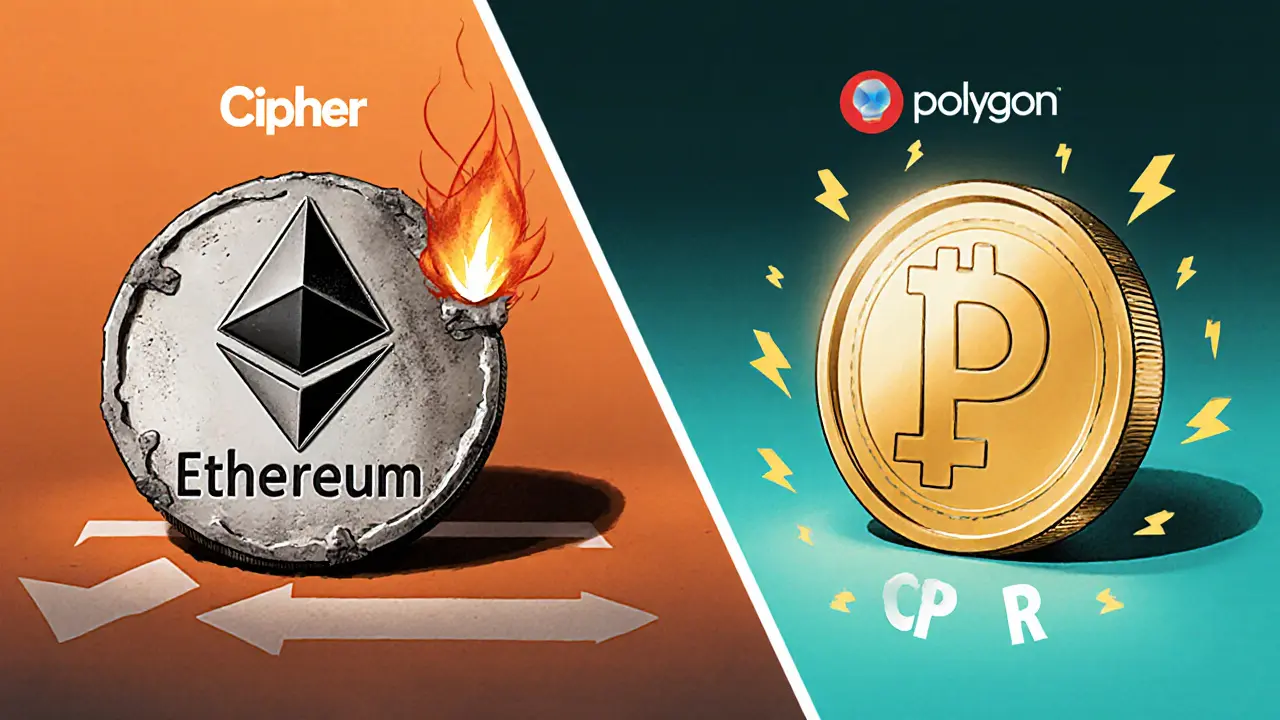
Technical Details of the Distribution
The airdrop used the original Ethereum contract, meaning the tokens were minted on the Ethereum blockchain. When Cipher later launched the Polygon version, they introduced a bridge that lets holders swap old CPR for the new, lower‑fee version.
Important technical specs:
- Old contract address: 0x[old‑address‑redacted] (Ethereum ERC‑20)
- New Polygon contract address:
0xaa404804ba583c025fa64c9a276a6127ceb355c6 - Total supply: 1.08billion CPR
- Circ. supply (as of Oct2025): ~186million CPR
Because the airdrop occurred before the migration, many recipients still see "Cipher[Old]" tokens in their wallets. To move them to Polygon, users must use Cipher’s official bridge or a trusted third‑party bridge that supports the specified contract addresses.
Market Performance After the Airdrop
Following the airdrop, CPR experienced a short‑term price spike as newly minted tokens entered circulation. However, the broader market trend has been volatile. Notable price points:
- All‑time high: $0.004065 on 3Feb2024.
- June2022 low: near $0.0000 (practically zero).
- Current 24‑hour range (Oct2025): $0.00004791 - $0.00006803.
The limited long‑term adoption suggests that the airdrop gave a temporary boost but did not secure sustained demand for CPR.
How to Verify If You Received the Airdrop
If you think you were eligible, follow these steps:
- Open your Ethereum wallet (MetaMask, Trust Wallet, etc.).
- Enter the old contract address in the "Add Token" field. The token will appear as "Cipher (CPR) [Old]".
- Check the balance. Any amount greater than 0 indicates you received the airdrop.
- If you wish to move the tokens, go to Cipher’s official bridge page (linked from the project's GitHub or community channels) and follow the swap instructions.
Note: Beware of phishing sites. Always verify the URL ends with the official domain and double‑check the contract address.
Risks and Lessons Learned
While airdrops can be an effective marketing tool, the Cipher case highlights common pitfalls:
- Transparency gaps: Lack of clear eligibility criteria left participants guessing.
- Chain migration confusion: Users who held "old" tokens were unsure how to transition to Polygon.
- Long‑term value: Without ongoing product development, token price struggled to stay above sub‑cent levels.
Future projects can avoid these issues by publishing a full snapshot schedule, providing step‑by‑step migration guides, and coupling airdrops with tangible product updates.
Comparison: Cipher[Old] vs. Cipher (Polygon)
| Feature | Cipher[Old] (Ethereum) | Cipher (Polygon) |
|---|---|---|
| Contract address | 0x[old‑address] | 0xaa404804ba583c025fa64c9a276a6127ceb355c6 |
| Network | Ethereum Mainnet | Polygon PoS |
| Gas fees (average) | ~$15‑$30 per transaction (2021‑2025) | ~$0.001‑$0.005 per transaction |
| Transaction speed | ~15‑30 sec | ~2‑6 sec |
| Current status on trackers | Tagged "Cipher[Old]" | Listed as "Cipher" (active) |
| Typical use case today | Legacy holdings, bridge swaps | Staking, platform fees, governance |
Next Steps for Holders
If you have "Cipher[Old]" tokens, here’s a practical roadmap:
- Confirm balance: Add the old contract to your wallet and note the amount.
- Secure your private keys: Never share them; airdrop scams often target holders.
- Use the official bridge: Follow the step‑by‑step guide on Cipher’s GitHub to swap to Polygon CPR.
- Consider staking: The Polygon token can be staked on supported platforms to earn modest yields.
- Stay updated: Join Cipher’s official Discord or Telegram for announcements about future upgrades.
Doing these actions ensures you retain the value of your airdropped tokens and can participate in any upcoming ecosystem features.
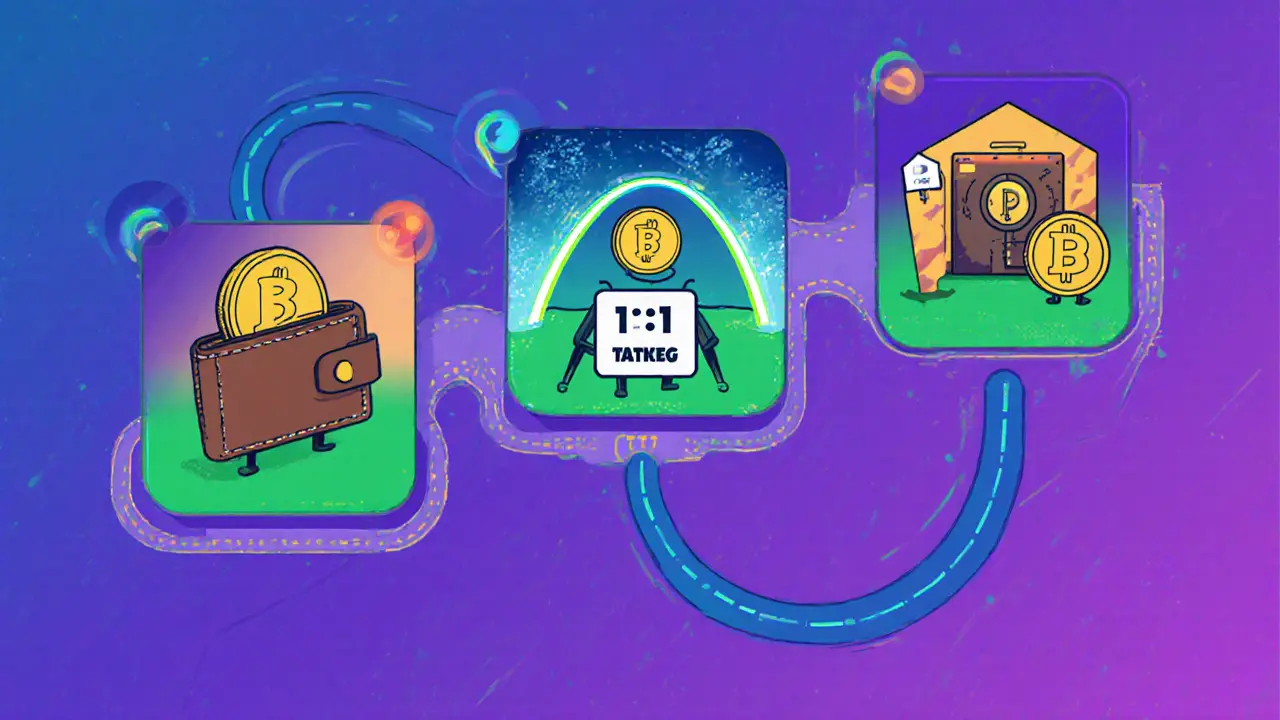
Frequently Asked Questions
Was the Cipher 2021 airdrop free?
Yes. Eligible users received CPR tokens at no cost, but they needed a verified CoinMarketCap account and an ERC‑20 compatible wallet to claim the airdrop.
How can I tell if I have "Cipher[Old]" tokens?
Add the old Ethereum contract address to your wallet’s token list. The token will show up as "Cipher (CPR) [Old]" and display your balance.
Can I swap old CPR for the Polygon version?
Yes. Use Cipher’s official bridge (details posted on the project’s GitHub) to exchange old ERC‑20 CPR for the Polygon contract at the 1:1 ratio.
Why did Cipher label the old token as "[Old]"?
The label distinguishes the pre‑migration Ethereum token from the newer Polygon version after the 2021 network upgrade.
Is the airdrop still claimable?
No. The claim window closed in 2021. If you missed it, the tokens remain unallocated and cannot be retroactively claimed.
What’s the current use case for CPR?
On Polygon, CPR powers access to Cipher’s business‑app suite, can be staked for network fees, and serves as a governance token for community proposals.






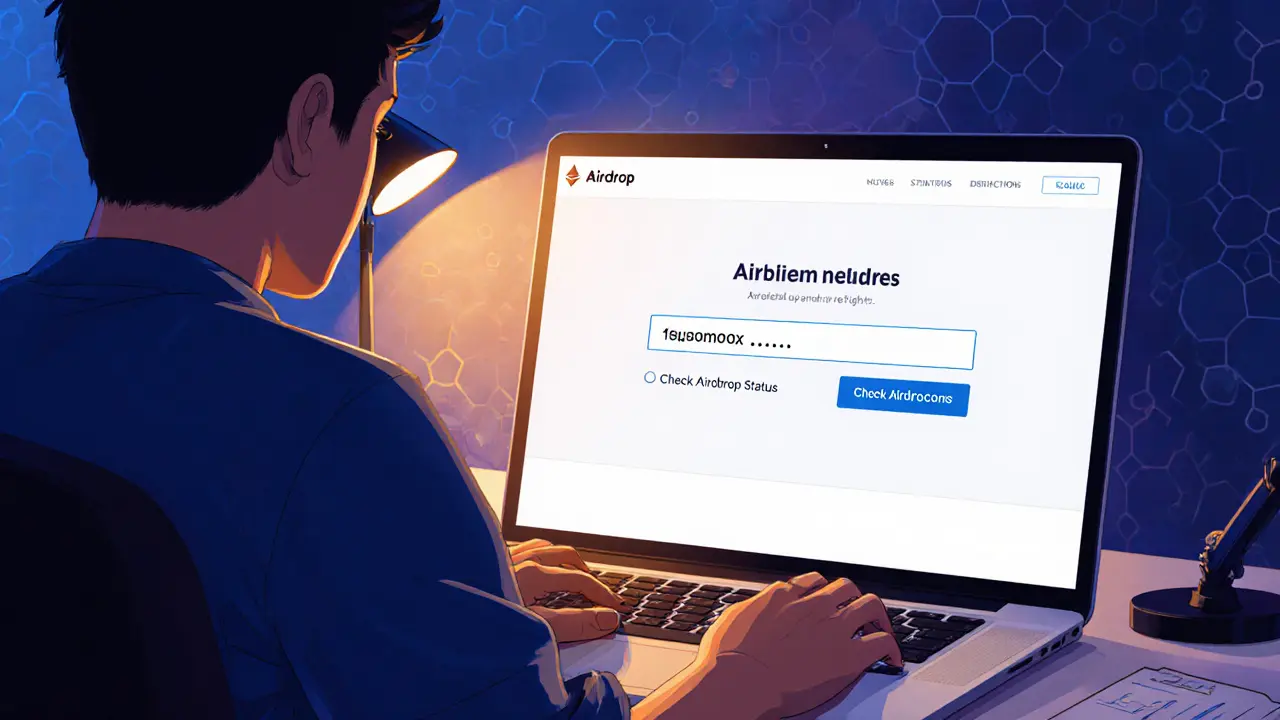
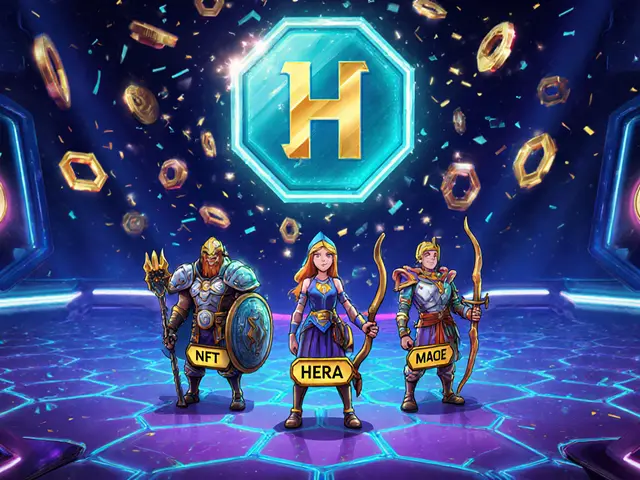
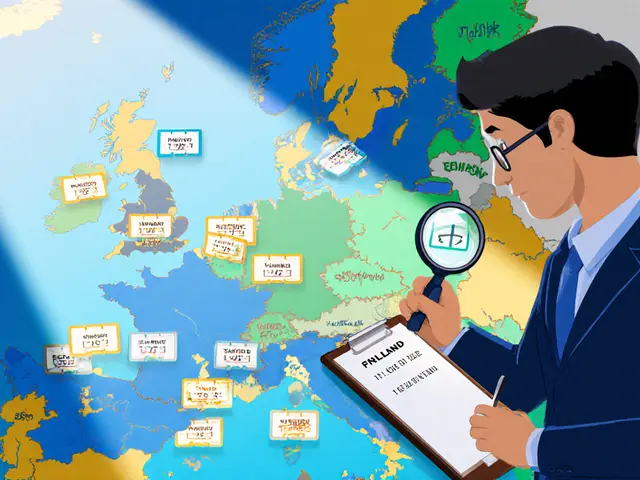


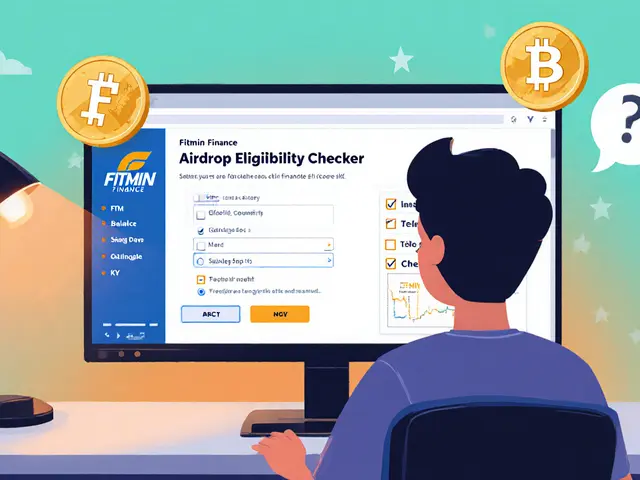
People Comments
The 2021 Cipher airdrop, while marketed as a simple promotional gesture, actually opens a broader conversation about token distribution ethics, governance, and community trust. One must consider, firstly, the opaque eligibility criteria that left many potential recipients bewildered, questioning the fairness of the snapshot methodology. Secondly, the migration from Ethereum to Polygon, executed without a comprehensive user education campaign, created a bifurcated token ecosystem, where “old” CPR tokens linger as relics of a bygone chain. Third, the gas fee disparity-$15 to $30 on Ethereum versus fractions of a cent on Polygon-underscores the economic barriers that early participants faced, especially those on modest budgets. Moreover, the lack of a transparent claim window, coupled with the reliance on a third‑party platform like CoinMarketCap, introduced additional layers of trust risk. In philosophical terms, the airdrop reflects a utilitarian approach: maximize short‑term distribution at the possible expense of long‑term value stability. Yet, from a deontological perspective, the project’s duty to its community was arguably neglected, as evidenced by the minimal post‑airdrop support. The bridge mechanism, while technically functional, suffers from user‑experience shortcomings, often requiring manual contract address entry, which can lead to errors. Community members, therefore, must exercise due diligence, verifying contract addresses, and safeguarding private keys. The token’s current utility-staking and governance on Polygon-offers a pathway to redeem value, but only for those who successfully navigate the migration. Historical price volatility, highlighted by the all‑time high of $0.004065 and subsequent decline, further complicates the risk‑reward assessment. Investors should also note that the circulating supply remains a fraction of the total, indicating potential dilution concerns. From a macro view, the Cipher case serves as a cautionary tale for future projects contemplating cross‑chain migrations. It demonstrates that technical upgrades must be accompanied by robust user outreach, clear documentation, and transparent timelines. Finally, participants who retain “old” tokens should act promptly, using the official bridge before any future deprecation, thereby preserving any residual utility and value.
While the exposition paints a grim picture, the airdrop's primary aim-to democratize initial token distribution-should not be dismissed outright.
Man, the whole “old” vs “new” thing feels like a philosophical paradox; we get tokens that exist on two planes, yet the value of the old token feels like a ghost of a memory. It’s like owning an antique car that you can’t drive without a special key. The migration to Polygon was meant to be a blessing, but many still sit with "Cipher[Old]" staring at their wallets, wondering if it’s a relic or a treasure. The low gas fees on Polygon are a game‑changer, yet the process to bridge is not exactly user‑friendly. If you’re comfortable with contracts and bridges, you’ll be fine, otherwise it’s a maze.
The airdrop was free, plain and simple.
From a technical standpoint, the Cipher airdrop leveraged a standard ERC‑20 minting function, subsequently integrating a cross‑chain bridge architecture predicated on Merkle proofs; however, the documentation omitted critical parameters regarding nonce management, thereby inducing potential replay attacks in edge‑case scenarios. Moreover, the gas optimization strategy-transitioning from an EVM cost model to a PoS chain-necessitated a comprehensive audit, which appears to have been superficially addressed.
Hey folks, don’t let the technical jargon scare you; the bridge is actually pretty straightforward once you copy the contract address correctly. If you’ve got any doubts, hit up the community Discord – the team’s been super helpful walking newcomers through each step.
🚀 Wow, diving into the Cipher airdrop feels like stepping onto a roller‑coaster of nostalgia and future potential! The “old” tokens are like vintage vinyl – they’ve got character, but who doesn’t love the crisp sound of the new Polygon version? 🎶 If you’re still holding the legacy CPR, it’s time to crank up the volume and bridge over. Trust me, the low fees are a sweet chorus you don’t want to miss! 🎤
Listen up! The airdrop wasn’t just a free giveaway; it was a strategic move to seed the market and create buzz. If you missed it, you’re out of luck, but for those who got the "old" tokens, the bridge to Polygon is the next big play.
The entire airdrop narrative is a textbook example of poor project management – vague eligibility, delayed communication, and a half‑baked migration plan. It’s a shame because the token could have had merit, but the execution left a sour taste.
Don’t be too harsh – every project hits bumps. The key now is taking action: add the old contract to your wallet, check your balance, and use the official bridge. You still have a chance to turn those tokens into something useful.
Curious about the bridge – does anyone have a step‑by‑step guide? I’m trying to move my Cipher[Old] to Polygon but the UI feels a bit confusing.
Just add the contract address in MetaMask and you’ll see the tokens. Easy peasy.
🌈 The Cipher airdrop is like a hidden treasure chest – you’ve got to know the secret map (the contract address) to find the loot! If you see those “old” tokens, think of them as vintage art; they’ve got history, but the new Polygon version is the fresh canvas for future masterpieces. 🎨
Vintage art? More like outdated junk. If you’re still clinging to the old tokens, you’re missing the point – the real value lies on Polygon, where fees are low and speed is high.
People keep acting like the airdrop was the endgame, but it’s just a marketing trick; the real test is whether the token can survive without constant hype.
Indeed, the sustainability of any token hinges on genuine utility and community adoption. Accordingly, I recommend engaging with the platform’s staking opportunities on Polygon to foster both network security and personal收益. Detailed participation not only enhances token utility but also aligns stakeholders with the protocol’s long‑term vision.
Staking is for whales, not us regular folks. I’d rather just hold whatever I got and see if it magically rises.
lol holdin is fine but dont forget 2 add the contract or u wont see any tokenz lol
The bridge process, while functional, could benefit from a more intuitive UI and better documentation. A stepwise tutorial with screenshots would lower the entry barrier for newcomers.